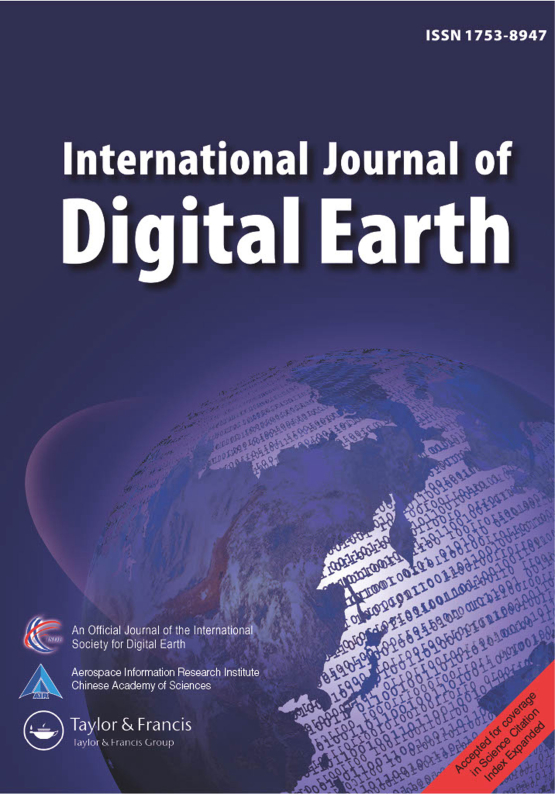Ship detection and identification in SDGSAT-1 glimmer images based on the glimmer YOLO model
IF 4.9
1区 地球科学
Q1 GEOGRAPHY, PHYSICAL
引用次数: 0
Abstract
Remote sensing technology has been widely used for marine monitoring. However, due to the limitations of sensor technologies and data sources, effective monitoring of marine ships at night remains challenging. To address these challenges, our study developed SDGST, a high-resolution glimmer marine ship dataset from SDGSAT-1 satellite and proposed a ship detection and identification method based on the YOLOv5s model, the Glimmer YOLO model. Considering the characteristics of glimmer images, our model has made several effective improvements to the original YOLOv5s model. In particular, the improved model incorporates a new layer for detecting small targets and integrates the CA (Coordinate Attention) mechanism. To enhance the original feature fusion strategy, we introduced BiFPN (Bi-directional Feature Pyramid Network). We also adopted the EIOU Loss function and replaced the initially defined anchors with clustering results, thus improving detection performance. The mean Average Precision (mAP%) reaches 96.7%, which is a 5.1% improvement over the YOLOv5s model. Notably, it significantly improves the detection of small ships. This model demonstrates superior performance in ship detection under glimmer conditions compared to the original YOLOv5s model and other popular target detection models, and may serve as a valuable reference for achieving high-precision nighttime marine monitoring.基于微光YOLO模型的SDGSAT-1微光图像舰船检测与识别
遥感技术在海洋监测中得到了广泛应用。然而,由于传感器技术和数据源的限制,在夜间对海洋船舶进行有效监测仍然具有挑战性。为了应对这些挑战,本研究开发了SDGSAT-1卫星的高分辨率微光船舶数据集SDGST,并提出了一种基于YOLOv5s模型的船舶检测和识别方法,即微光YOLO模型。考虑到微光图像的特点,我们的模型在原有的YOLOv5s模型的基础上进行了若干有效的改进。特别是,改进后的模型增加了小目标检测层,并集成了CA (Coordinate Attention)机制。为了改进原有的特征融合策略,我们引入了双向特征金字塔网络(BiFPN)。我们还采用了EIOU Loss函数,用聚类结果代替了最初定义的锚点,从而提高了检测性能。平均精度(mAP%)达到96.7%,比YOLOv5s模型提高了5.1%。值得注意的是,它显著提高了对小型船舶的探测能力。该模型在微光条件下的船舶检测性能优于原有的YOLOv5s模型和其他流行的目标检测模型,可为实现高精度夜间海洋监测提供有价值的参考。
本文章由计算机程序翻译,如有差异,请以英文原文为准。
求助全文
约1分钟内获得全文
求助全文
来源期刊
CiteScore
6.50
自引率
3.90%
发文量
88
审稿时长
3 months
期刊介绍:
The International Journal of Digital Earth is a response to this initiative. This peer-reviewed academic journal (SCI-E) focuses on the theories, technologies, applications, and societal implications of Digital Earth and those visionary concepts that will enable a modeled virtual world. The journal encourages papers that:
Progress visions for Digital Earth frameworks, policies, and standards;
Explore geographically referenced 3D, 4D, or 5D models to represent the real planet, and geo-data-intensive science and discovery;
Develop methods that turn all forms of geo-referenced data, from scientific to social, into useful information that can be analyzed, visualized, and shared;
Present innovative, operational applications and pilots of Digital Earth technologies at a local, national, regional, and global level;
Expand the role of Digital Earth in the fields of Earth science, including climate change, adaptation and health related issues,natural disasters, new energy sources, agricultural and food security, and urban planning;
Foster the use of web-based public-domain platforms, social networks, and location-based services for the sharing of digital data, models, and information about the virtual Earth; and
Explore the role of social media and citizen-provided data in generating geo-referenced information in the spatial sciences and technologies.

 求助内容:
求助内容: 应助结果提醒方式:
应助结果提醒方式:


